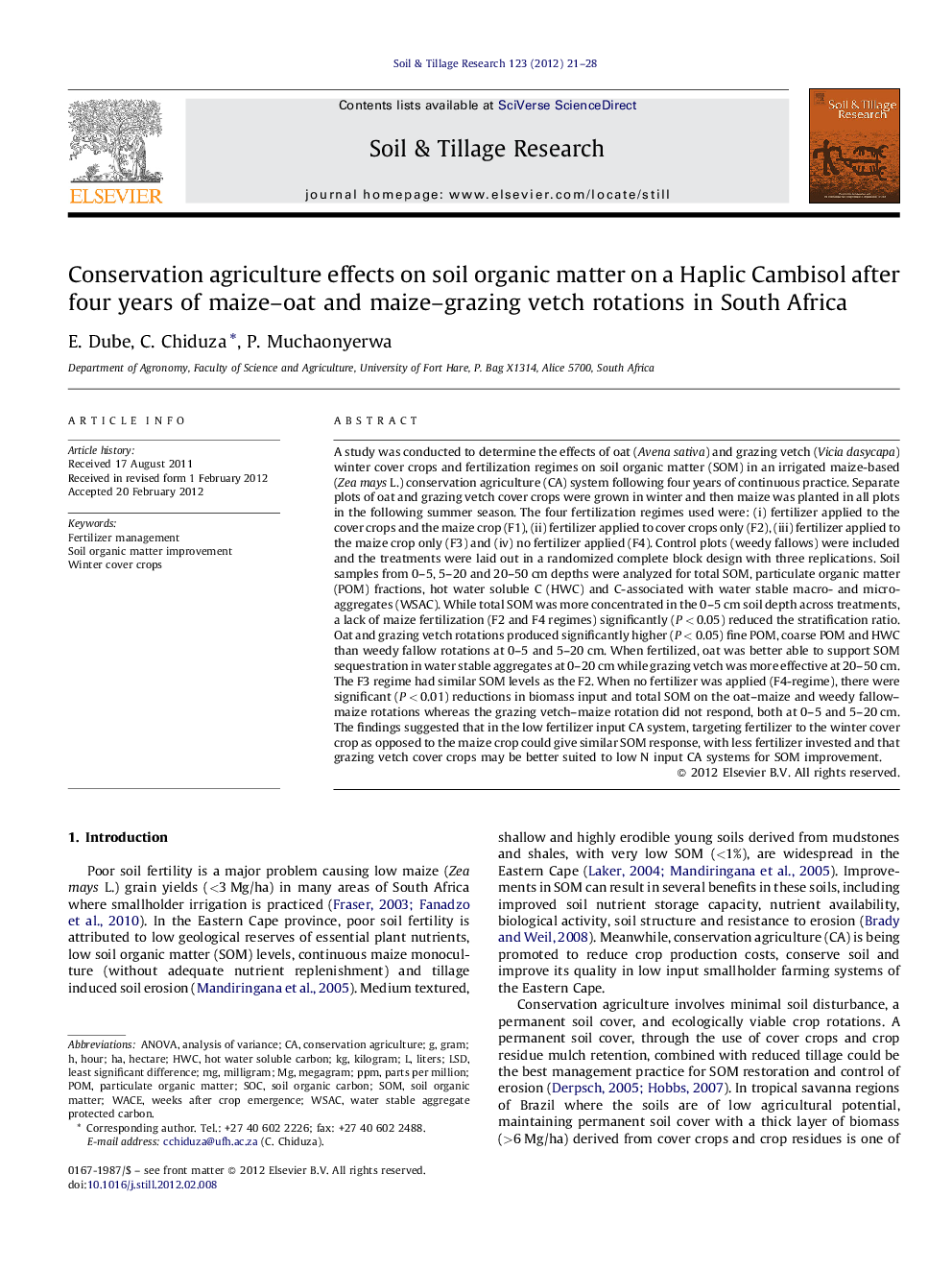| کد مقاله | کد نشریه | سال انتشار | مقاله انگلیسی | نسخه تمام متن |
|---|---|---|---|---|
| 305898 | 513061 | 2012 | 8 صفحه PDF | دانلود رایگان |

A study was conducted to determine the effects of oat (Avena sativa) and grazing vetch (Vicia dasycapa) winter cover crops and fertilization regimes on soil organic matter (SOM) in an irrigated maize-based (Zea mays L.) conservation agriculture (CA) system following four years of continuous practice. Separate plots of oat and grazing vetch cover crops were grown in winter and then maize was planted in all plots in the following summer season. The four fertilization regimes used were: (i) fertilizer applied to the cover crops and the maize crop (F1), (ii) fertilizer applied to cover crops only (F2), (iii) fertilizer applied to the maize crop only (F3) and (iv) no fertilizer applied (F4). Control plots (weedy fallows) were included and the treatments were laid out in a randomized complete block design with three replications. Soil samples from 0–5, 5–20 and 20–50 cm depths were analyzed for total SOM, particulate organic matter (POM) fractions, hot water soluble C (HWC) and C-associated with water stable macro- and micro-aggregates (WSAC). While total SOM was more concentrated in the 0–5 cm soil depth across treatments, a lack of maize fertilization (F2 and F4 regimes) significantly (P < 0.05) reduced the stratification ratio. Oat and grazing vetch rotations produced significantly higher (P < 0.05) fine POM, coarse POM and HWC than weedy fallow rotations at 0–5 and 5–20 cm. When fertilized, oat was better able to support SOM sequestration in water stable aggregates at 0–20 cm while grazing vetch was more effective at 20–50 cm. The F3 regime had similar SOM levels as the F2. When no fertilizer was applied (F4-regime), there were significant (P < 0.01) reductions in biomass input and total SOM on the oat–maize and weedy fallow–maize rotations whereas the grazing vetch–maize rotation did not respond, both at 0–5 and 5–20 cm. The findings suggested that in the low fertilizer input CA system, targeting fertilizer to the winter cover crop as opposed to the maize crop could give similar SOM response, with less fertilizer invested and that grazing vetch cover crops may be better suited to low N input CA systems for SOM improvement.
► We tested winter cover crop–maize rotations and fertilizer effects on SOM.
► After 4 years, cover crops increased mineralizable SOM compared to weedy fallows.
► Fertilizer was better invested on cover crops than on follow maize for SOM buildup.
► Oat was better at SOM sequestration in water stable aggregates at 0–20 cm.
► With no fertilizer, vetch had higher SOM and is a better bet for low input systems.
Journal: Soil and Tillage Research - Volume 123, July 2012, Pages 21–28